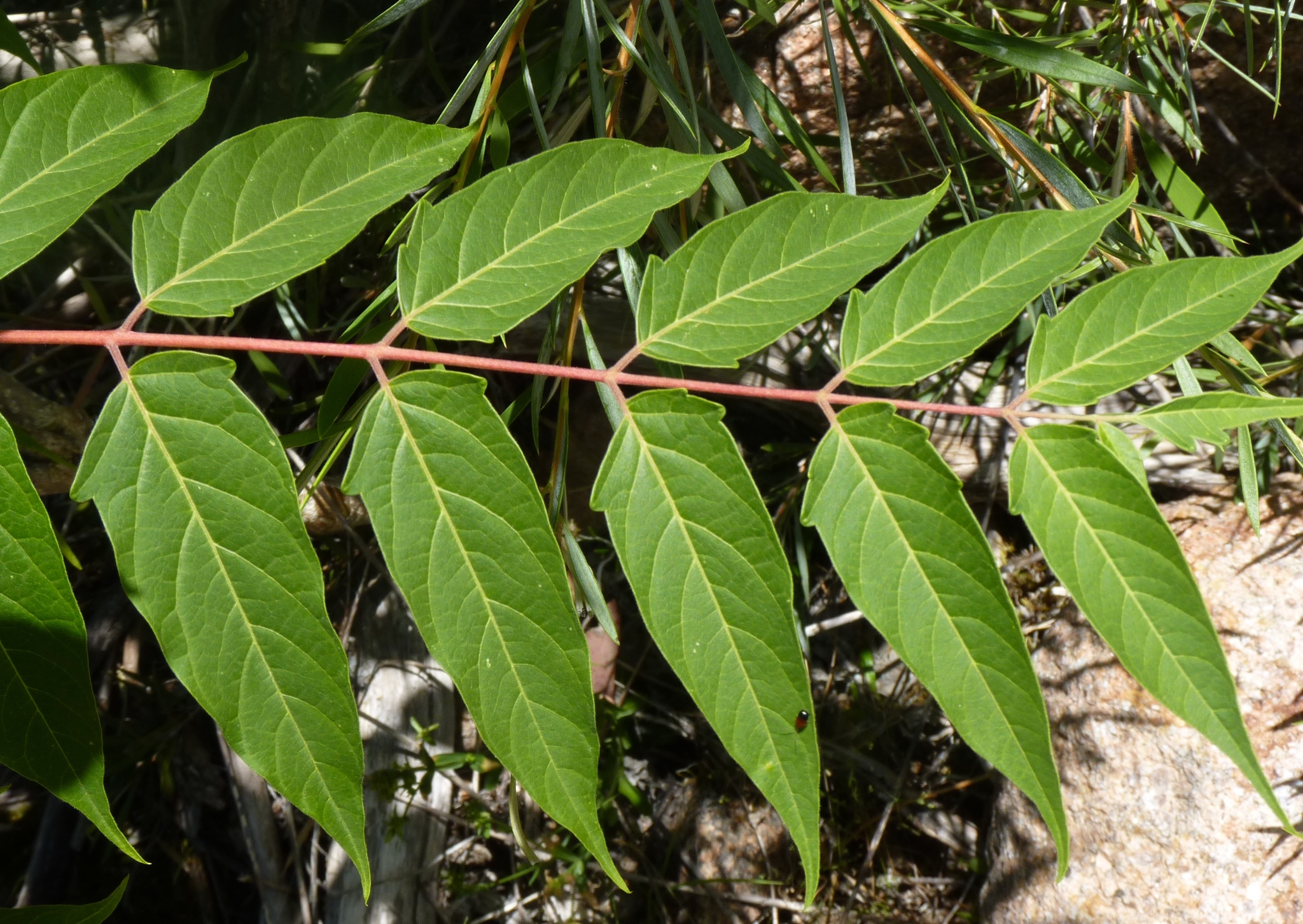
Mostly evergreen trees and shrubs. Leaves alternate, pinnate or occasionally simple; stipules mostly absent. Flower clusters in spikes or dense branched clusters. Flowers mostly unisexual, small, regular. Sepals and petals usually 5 (rarely 3-8), free or united, petals occasionally absent. Sepals tubular. Disk between the petals and stamens. Stamens free, the same number as or double that of the petals. Ovary superior, of 2-5 chambers, each with 1(2) ovules with axile placentation. Carpels 2-5, fused or free below, but united at the style or stigma. Fruit a schizocarp, samara or capsule, rarely a berry or drupe.
Generally considered to be closely related to the Rutaceae.
About 22 genera and 160 species throughout the tropics and subtropics. Australia has 4 genera and 6 species.
Quassia and other genera have medicinal uses; some trees are used for timber.
Leaves compound, alternate; fruit, in cultivated plants, a samara.
Source: (2002). Simaroubaceae. In: . Horticultural Flora of South-eastern Australia. Volume 3. Flowering plants. Dicotyledons. Part 2. The identification of garden and cultivated plants. University of New South Wales Press.
